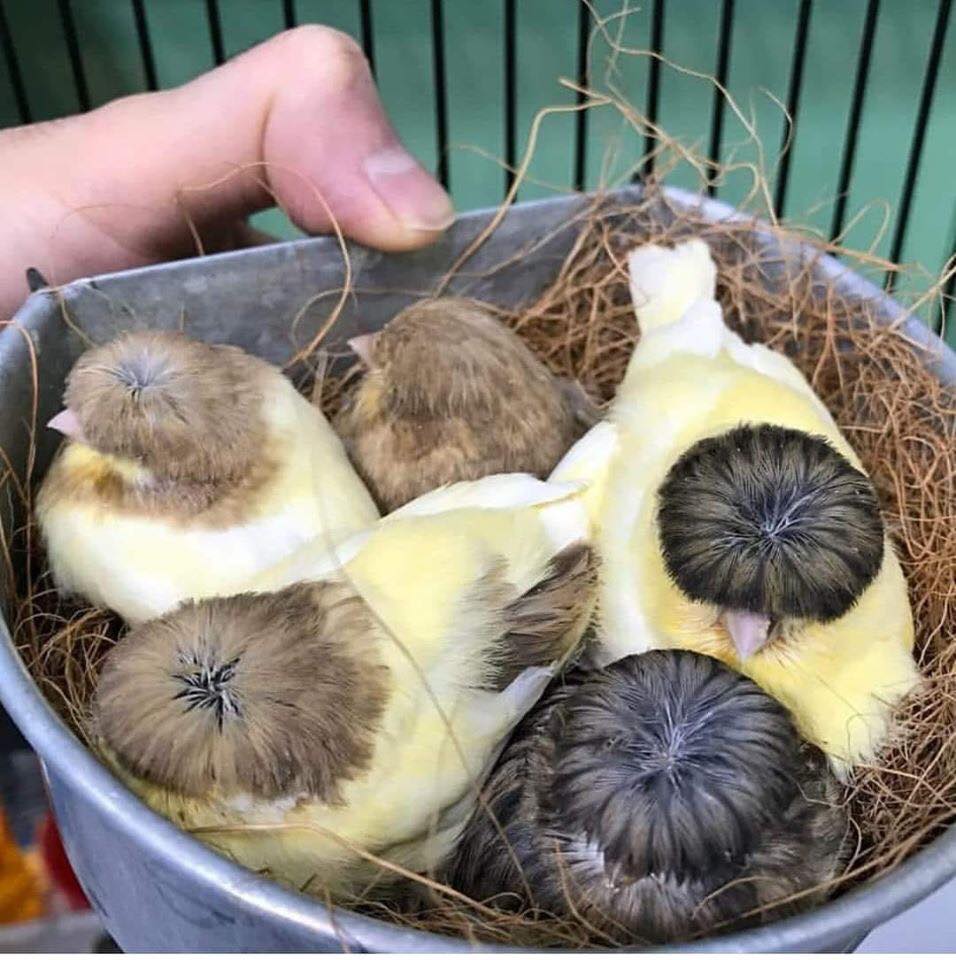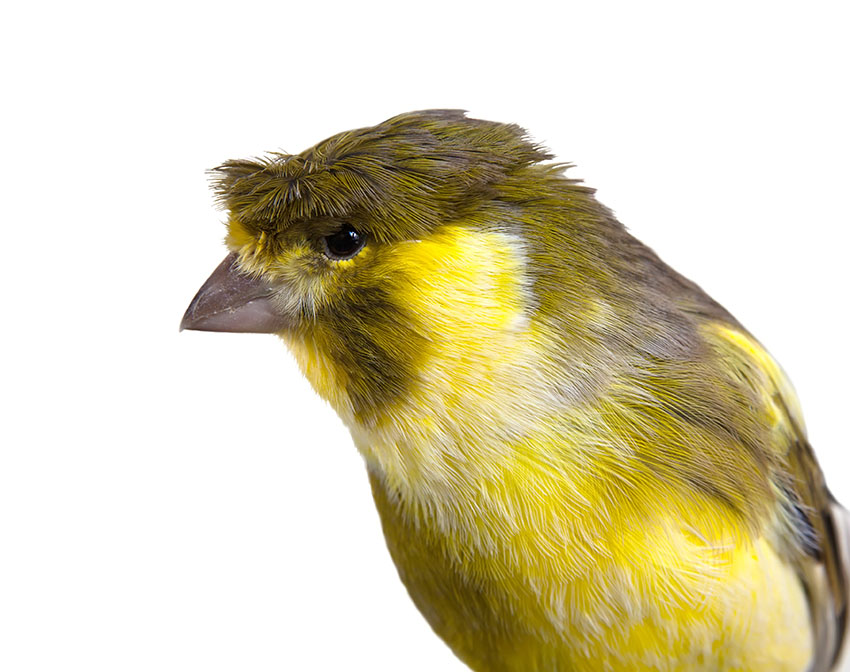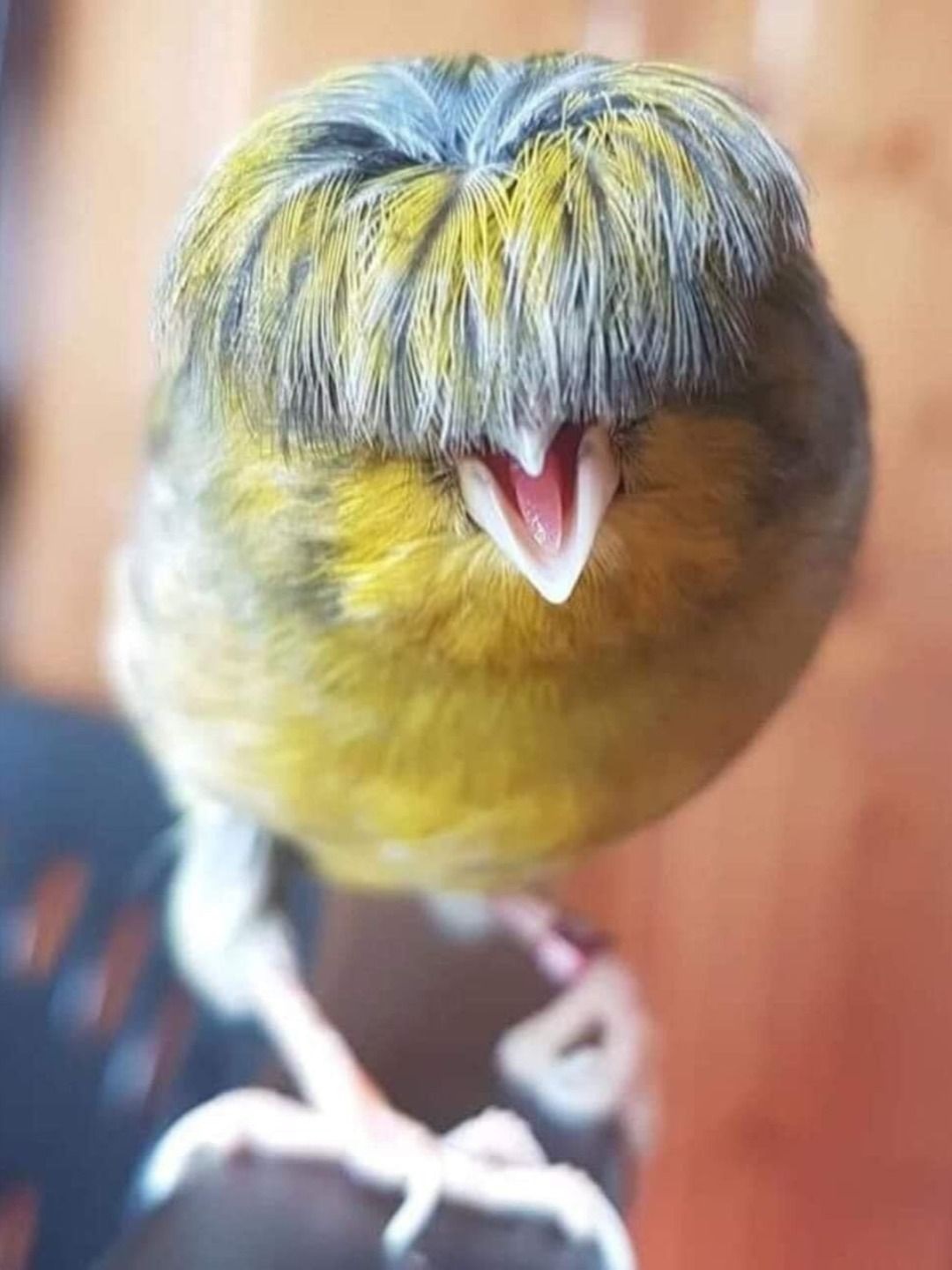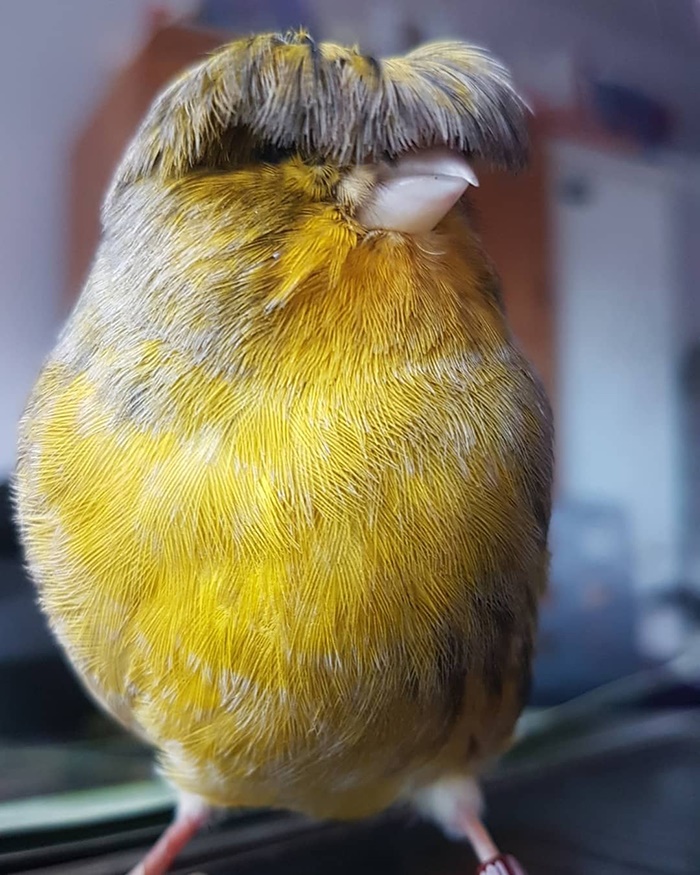Most Borders are yellow, but they can be found in a wide range of colour combinations.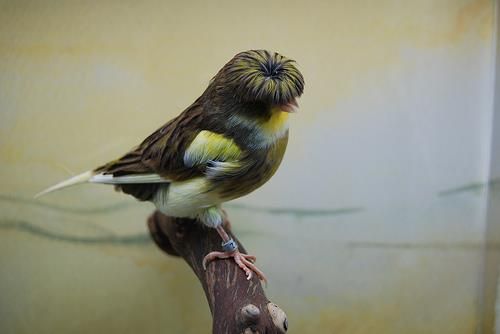
Most Borders are yellow, but they can be found in a wide range of colour combinations. The defining features are the size, the stance (standing at a 60 degree angle to the perch), a silky smooth coat of feathers, and a plump, rounded profile, with a body resembling a large feathered egg.
Columbus Fancy
This is an American speciality developed in the 1920s, from a combination of Harz, Yorkshire, Lancashire, Gloster and Norwich Canaries. It’s named after the city in Ohio, rather than the man who sailed the ocean blue in 1492. It measures around 150mm, and is one of the ‘stocky’ varieties, with a short beak, a rounded head and chest, and a thick neck. It also has a crest.
Crested
The Crested Canary came about after breeders attempted to create the ultimate crested bird by combining Norwich and Lancashire cresteds. The head feathers are therefore very ostentatious; but this bird is not as popular as the Gloster, and consequently a lot rarer. It’s a large one, reaching 170mm (6.7 inches).
Fife, or Fife FancyThis is a miniature version of the Border Canary, bred for cuteness in the mid-20th century in Fife, Scotland. At 114mm (4½ inches) it’s the smallest common Canary variety.FrilledThese birds have mutated feathers, making them look as though they have just come in from a hurricane. The effect is either pretty or messy, depending on your viewpoint. The feathers curl inwards, upwards and outwards in various places, rather than straight down from head to tail. The areas affected are the back, chest and flanks, with feather formations referred to as a mantle, jabot/craw and fins, respectively
